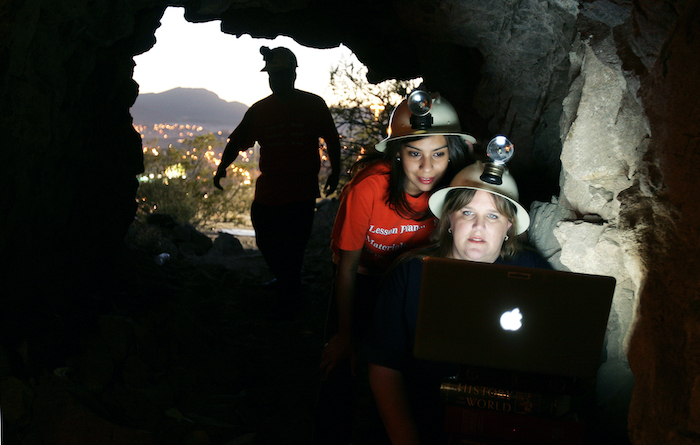
UTEP to Host Virtual Town Hall on Strengthening STEM Workforce
Last Updated on December 04, 2020 at 12:00 AM
Originally published December 04, 2020
By UC Staff
UTEP Communications
EL PASO, Texas — The University of Texas at El Paso and the National Academies of Sciences, Engineering, and Medicine (NASEM) will co-host host a free virtual town hall focusing on strengthening the STEM workforce beginning at 9 a.m. MST Friday, Dec. 11, 2020. Sessions are scheduled throughout the day until 1:30 p.m.

The virtual town hall is free and open to the public. Session I will highlight the importance of providing access to exceptional education by preparing students, in particular Hispanic students, to enter a competitive STEM workforce through inclusive, participatory, and integrated education and research environments. National experts will highlight UTEP’s efforts to support student success at multiple levels and how such efforts are recognized. Session II will focus on UTEP’s collective approach to institutional transformation. The audience will have an opportunity to engage through Q&A throughout the sessions.
“Diversifying STEM fields is critical to the global economy and critical to our mission as an institution with a student body that is over 80% Hispanic,” said John Wiebe, Ph.D., provost and vice president for academic affairs. “We are pleased to be co-hosting this town hall with NASEM – leaders in innovation, inclusivity, and diversity – to continue informing our work to prepare students well.”
In 2018, the NASEM Board on Higher Education and Workforce released a consensus study report, “Minority Serving Institutions: America’s Underutilized Resource for Strengthening the STEM Workforce,” examining effective strategies to increase the quantity and quality of STEM graduates at MSIs. Since its release, with the support of the Department of Defense and the ECMC Foundation, the National Academies has been collaborating with MSIs throughout the country to conduct virtual town hall events to discuss the report’s findings; hear from these institutions on how they are working to advance STEM workforce preparation, education, and research capacity; and foster new discussions and solutions around these issues.
This work is critical for the nation. As stated in the NASEM report: “Research suggests that the cultural diversity of a nation’s workforce is a key factor in its ability to innovate and compete in a global economy.” For the United States to maintain its competitive edge, it will be critical to increase engagement of underrepresented groups in STEM, and MSIs have the highest potential to accomplish this.
According to the U.S. Census, there are 62.3 million Hispanics in the United States, or 19% of the U.S. population. By 2060, that number is expected to climb to 28%. Yet the representation of Hispanics in STEM is half that percentage. UTEP is a leader in the nation in its organizational structures and programs that serve to increase Latinx representation in the workforce and in particular those who become involved in research and creative activity.
“It is an honor that NASEM chose UTEP as one of the institutions to discuss the recommendations from their Minority-Serving Institutions (MSI) consensus study and highlight the work that UTEP has done to strengthen the pipeline of competitive students who enter to the STEM workforce,” said Ann Gates, Ph.D., vice provost for faculty affairs. “The town hall provides us an opportunity to share with a national audience UTEP’s intentional and coordinated approach to support holistic Hispanic student success.”
Join the town hall Friday at this link. You will have access to view the conference schedule and join individual sessions.
The University of Texas at El Paso is one of the largest and most successful Hispanic-serving institutions in the country, with a student body that is 83% Hispanic. It enrolls nearly 25,000 students in 166 bachelor’s, master’s and doctoral programs in 10 colleges and schools. With more than $100 million in total annual research expenditures, UTEP is ranked in the top 5% of research institutions nationally and fifth in Texas for federal research expenditures at public universities.
